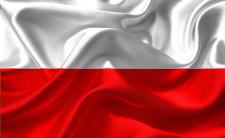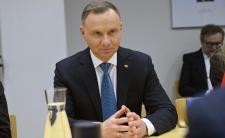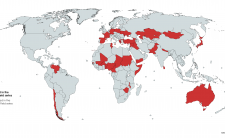The Republic of Poland is situated in Central Europe with Warsaw as its capital. It is bordered to the north by the Baltic Sea, Lithuania and Russia, to the east by Belarus and the Ukraine, to the south by Slovakia and the Czech Republic and Germany to the west. The country covers approximately 313,000 square kilometers with a population of 38.4 million people, most of whom are Roman Catholics. Following the “Solidarity Movement”, Poland was the first country in Central and Eastern Europe to liberate itself from communism.
Political system and history
Poland is a parliamentary democratic representative republic with a political system based on the Polish Constitution of 1997. The executive power is in the hands of the president and the Prime Minister. The former serves as the head of state whereas the latter is the head of government. The legislature consists of two chambers, the Senate (upper house) with 100 members and the Sejm (lower house) with 460 members. The judicial branch is headed by a Supreme Court and a Constitutional Tribunal.
Poland’s written history dates back to the reign of the reign of Mieszko I in 966. The Kingdom of Poland was formed in 1025. Following the Polish-Lithuanian Commonwealth in 1569, the “Noble Republic”, a system that vested power both in the nobles and an elected monarch, was established in 1572. The monarchy ended after the three partitions among the Kingdom of Prussia, Russia and Austria in 1795. The country regained its independence in 1918 under the “Second Polish Republic”, however, was invaded by Nazi Germany and the Soviet Union during World War II. After years of communist rule, Poland reemerged an independent state after the revolutions in 1989.
Constitutional history and development
The Constitution of 1791 and the Polaniec manifesto
Poland’s first written constitution was proposed on 3 May 1791, making it the second oldest written constitution in the world. The constitution stipulated the decentralization of state power and emphasized the notion of division of powers whilst at the same time providing for a system of checks and balances. The Sejm was the official legislative branch, consisting of two chambers, the Senate and the Chamber of Deputies.
Aware of the inefficient structure of government of the past, the outcome of an all powerful legislative, the constitution aimed at limiting the powers of the parliament in order to balance it to the other branches of the state. For example, the liberum veto, a parliamentary device in the Polish-Lithuanian Commonwealth which had formerly required unanimity in the decision making process, was abolished. Moreover, the constitution put an end to royal elections by restoring the system of a hereditary monarchy. Only in effect for a short period, the 1791 constitution became a symbol of Poland’s national identity and strengthened the thought of a special connection between Catholicism and constitutionalism, due to the declaration of the supremacy of Catholicism in the constitution.
The Constitution of 1791 was followed by the Polaniec Manifesto on 7 May 1794, which represents a famous legal document of the Polish uprising against its Russian occupiers, who invaded the country in 1792. The Manifesto intended to motivate the peasantry to fight for the freedom of Poland by granting peasants broad civil liberties, most of which had not been included in the constitution of 1791.
The Constitution of 1919 and 1921
In 1815, the Kingdom of Poland was restored under a new constitution as a separate possession of the Russian Empire at the Congress of Vienna. It was not until the end of World War I that Poland was finally able to reemerge an independent nation. On 20 February 1919, the “Small Constitution” was adopted and remained in effect until the final constitution was adopted on 17 March 1921. Modeled after the French constitution of 1875, the constitution provided for tripartite division of powers, a strong local government and restored Poland as a democratic republic. Again, the bicameral legislature obtained broad powers at the expense of the judiciary and the executive. Moreover, the constitution included a broad catalogue of civil liberties; amongst others the freedom of speech, freedom of the press, freedom of assembly and private property rights. Similar to the 1791 constitution, the importance of Catholicism for the Polish nation was highlighted, however whilst paying respect to religious freedom.
The Constitution of 1935
Following years of authoritarian rule, the constitution of 1935 introduced to Poland a presidential system by limiting the role of the Sejm and delegating most state power to the President. The emphasis on the powers of the executive was a reaction to the former inefficient system of government, which had provided for political decisions being dependent on the will of the legislative. Not only was the President the head of the government but the “Chief of State” and could be reelected unlimitedly. The constitution of 1935 moreover enabled the executive, amongst others, to appoint and dismiss members of the government and judiciary as well as the right to convene and to adjourn the chambers of the National Assembly. Civil liberties and individual rights, which had been introduced by the 1921 constitution, remained valid up to a certain extent under the 1935 constitution. However, the 1935 constitution focused more on the idea of “social solidarity”, elevating the state’s interests above those of the individual, and contained certain elements of an autocratic government.
The Constitution of the Peoples’ Republic of Poland 1952
After World War II, Poland was reconstituted a Soviet satellite state. The new constitution was the transitional or so called “Small Constitution” of 1947, followed by a Soviet-style constitution adopted on 22 July 1952. The 1952 constitution renamed the Republic of Poland into “The Polish People’s Republic” and declared that power and authority was with the “working people”. In fact political control was not vested in the people but centralized and collective interests stood above individual rights. Enforcement mechanisms for individual rights and freedoms as well as the tripartite separation of power were eliminated and the principle of a planned economy was introduced. After its coming into force, the 1952 constitution was subject to many changes and amended several times, especially after the establishment of the so called “Solidarity movement”.
The Constitution of 1927 and 1997
After the strikes by “Solidarity” trade union and major amendments to the 1952 constitution in 1989 and 1990, Poland was finally able to regain its independence under a democratic constitution in 1992 after 30 years of communist rule. This transitional constitution stipulated Poland’s return to constitutional rule and formed the foundation of the government between 1992 and 1997. The country faced many challenges: The single party system had to be transformed into a multi-party system, a free market economy installed and the rise of pluralism threatened the traditional Polish Roman Catholic culture.
On 2 April 1997, the current Constitution of the Republic of Poland was finally adopted by the National Assembly. Passed by national referendum on 25 May 1997, it came into effect on 17 October 1997. Its provisions are to a large extent modeled on western legal and constitutional practice and partly reflect Poland’s desire to join the North Atlantic Treaty Organization (NATO). The new constitution enhances judicial review and stipulates a broad range of civil rights. It establishes a system of checks and balances among the president, prime minister, and parliament, prohibits political parties based on “Nazism, fascism and communism” and provides for the civilian control over the military.
The Executive
The President is the supreme representative of Poland. He is elected for a five-year term and only may be reelected once. The president represents the country in foreign affairs, ratifies and renounces international agreements, appoints, recalls, and receives diplomatic representatives and cooperates with the government on foreign policy. As the supreme commander of the armed forces, he has the power to grant citizenship and pardons, confer orders and decorations. Moreover, he may convene the cabinet concerning some matters and may issue regulations, executive orders and other “Official Acts”. In case of an infringement of the Constitution or statue or the commission of an offense, the President can be held accountable before the Tribunal of State.
The government consists of a Council of Ministers led by a Prime Minister, who is nominated by the President and normally a member of the majority coalition in the Sejm. The Prime Minister appoints members of Council of Ministers, organizes its work and develops an overall government agenda. The Council of Ministers coordinates the activities of the ministries and their subordinate entities, compiles and presents the annual state budget and guides foreign policy and controls the field of national defense.
The Legislature
Legislative power is vested in the Sejm and the Senate. When deciding on an issue in joint session, they act as the National Assembly. Candidates to both chambers are either nominated by political parties or voters, following procedures specified by statue. The 100 Senators and the 460 deputies of the Sejm are elected by the people every four years. Among the prominent changes in the 1997 constitution were the elimination of a national list regarding the election of deputies and the introduction of an electoral threshold, stipulating that only parties obtaining 5% of the votes enter parliament, with some guaranteed seats for small ethnic parties. It is the duty of the Sejm to control the Council of Ministers. Bills may be proposed by deputies and senators, the President, the cabinet, and 100,000 citizens entitled to vote. After a bill has been passed by the Sejm and approved by the Senate, the proposed bill has to be signed by the President. Concerning constitutional amendments, the proposed amendment has to be adopted by the Sejm by a majority of at least two thirds and requires the presence of at least a half of the deputies. In specific areas, constitutional amendments must fulfill additional requirements.
The Judiciary
The 1997 constitution created a Supreme Court and lower “common” courts as well as special administration and military courts. The President nominates the judges for an indefinite period on the basis of the proposal of the National Council of the Judiciary. The main task of the Supreme Court is to supervise the judgments of the common and military courts.
The Constitutional Tribunal, composed of fifteen judges who are chosen by the Sejm, is endowed with the adjudication of the constitutionality of laws passed by the other branches and individual actions concerning the infringement of constitutional rights. The Tribunal of the State has jurisdiction to try senior government officials for statutory of constitutional violations committed in the performance of their official functions. An Ombudsman shall look after the protection of citizens’ rights.
System of Government
Timeline
| 1569 | Establishment of the Polish-Lithuanian Commonwealth |
| 1700s | The Three Partitions of Poland - Russia, Prussia and Austria divide Poland amongst themselves |
| May 2, 1791 | 3 May Constitution in 1791. |
| 1815 | The Congress of Vienna creates a rump Kingdom of Poland, ruled by Russia. |
| November 11, 1918 | Independent Polish state restored after the end of World War I. |
| March 23, 1935 | Final version of the new constitution was promulgated into law. Pilsudski dies on 12 May 1935. The military regime continues. |
| 1939 | Nazi Germany invades Poland; beginning of World War II. The Soviet Union invades from the east. Germany and the Soviet Union divide Poland between them. |
| 1945 | Soviet forces capture Warsaw in January. All German forces are driven from Poland. Poland's borders are set by the post-war Potsdam conference. |
| 1947 | “Small Constitution” of 1947, Poland becomes a Communist People's Republic after Soviet-run elections. |
| July 22, 1952 | The constitution of 1952, orientated at the Soviet constitution, was adopted. |
| 1955 | Poland joins the Soviet-run Warsaw Pact military alliance. |
| 1980 | Emergence of the Solidarity trade union under Lech Walesa. |
| 1989 | Round-table talks between Solidarity, the Communists and the Catholic Church. Partially free elections with widespread success for Solidarity. |
| 1990 | Walesa elected president of Poland. Market reforms, including large-scale privatization, are launched. |
| 1992 | Soviet troops start to leave Poland. |
| 1994 | Poland joins NATO’s Partnership for Peace programme. |
| 1995 | Aleksander Kwasniewski, a former Communist, becomes president. |
| April 2, 1997 | New constitution is adopted. General election is won by the Solidarity grouping AWS. |
| 1999 | Poland joins the NATO. |
| June, 2003 | Poles vote in referendum in favor of joining EU. |
| May, 2004 | Poland joins the EU. |
Bibliography
- British Broadcasting Corporation. Timeline: Poland, 2011. Web. 28 Jun 2011.
- Brzezinski, Mark F., Constitutional Heritage and Renewal: The Case of Poland, Virginia Law Review, 1991, Vol. 77, p. 49-112.
- Central Intelligence Agency. The World Factbook: Poland, 2011. Web. 27 Jun 2011.
- Garlicki, Leszek. Constitutional Developments in Poland. Saint Louis University Law Journal. 1987-1988. Vol. 32, p. 713.
- German Foreign Ministry. Länderinformationen: Poland, 2011. Web. 27 Jun 2011.
- Institute for the Study of Civil Society. Poland, 2010. Web. 29 Jun 2011.
- Maddex, Robert L. Constitutions of the World. 3rd. ed. Washington, D.C.: CQ Press. 2008. Print.
- Sejm of the Republic of Poland. The Constitution of the Republic of Poland. Web. 28 Jun 2011.
- The Federal Agency for Civic Education Germany. Country Profile 3: Poland, 2008. Web. 27 Jun 2011.
- Top of Poland. History and Today. Web. 27 Jun 2011.
- United States. Background Note: Poland, 2011. Web. 28 Jun 2011.
| Branch | Hierarchy | Powers | Removal |
|---|






Share this article